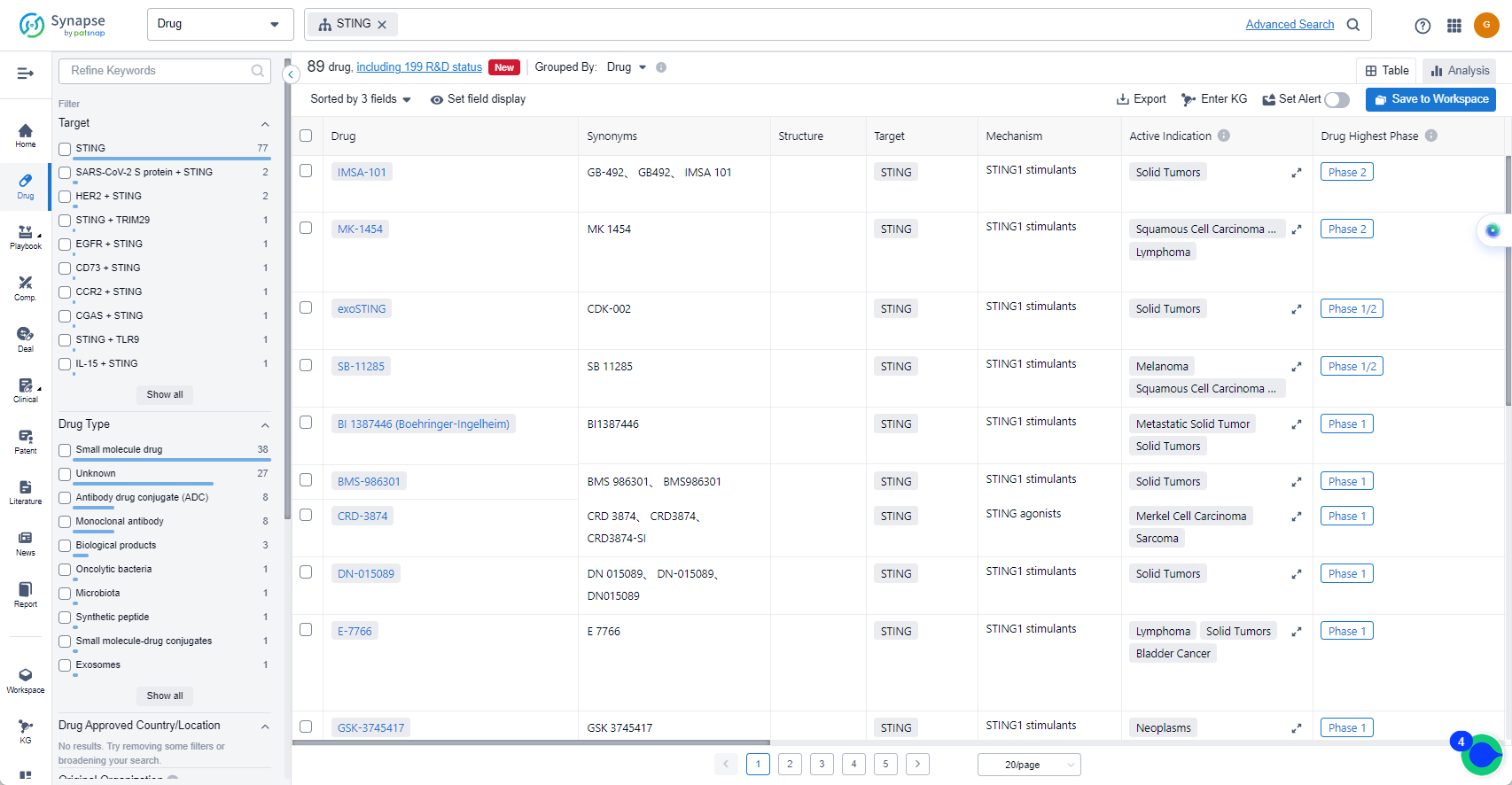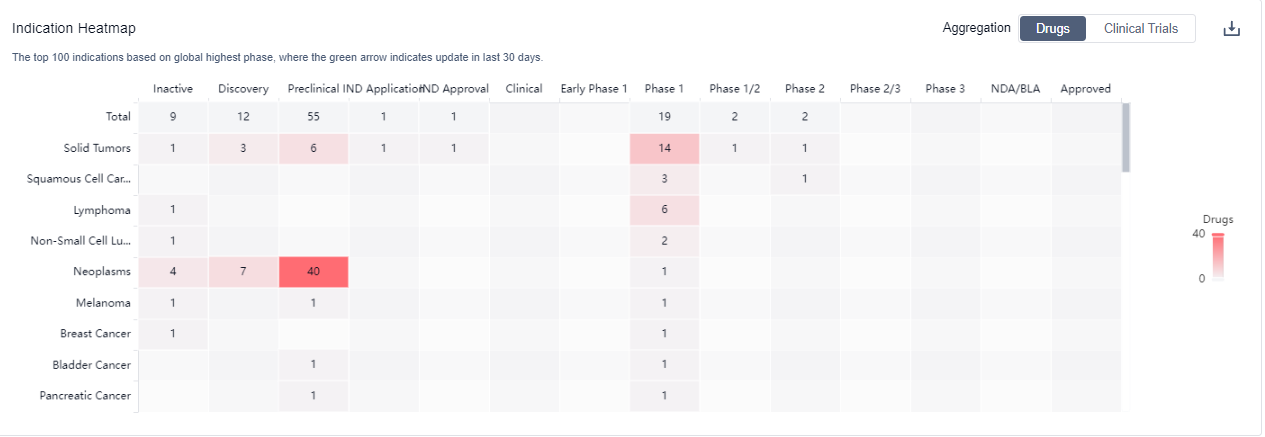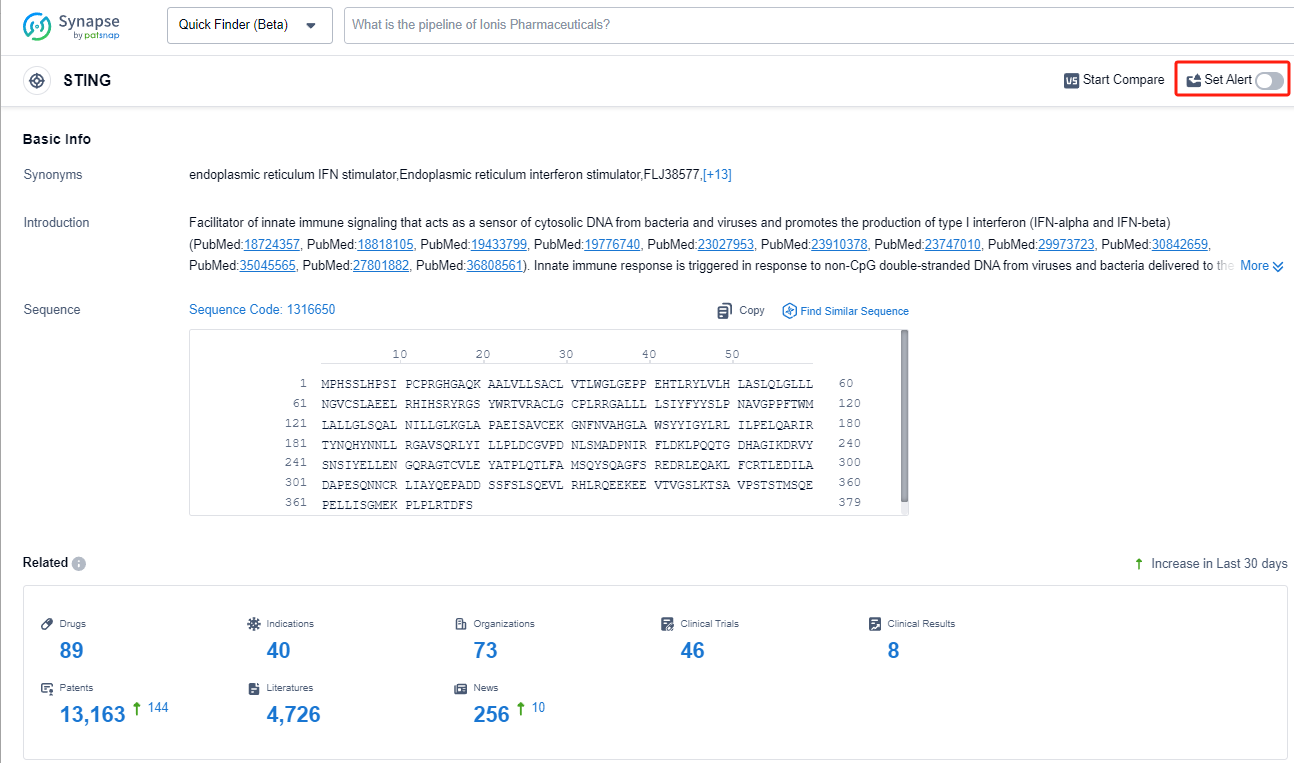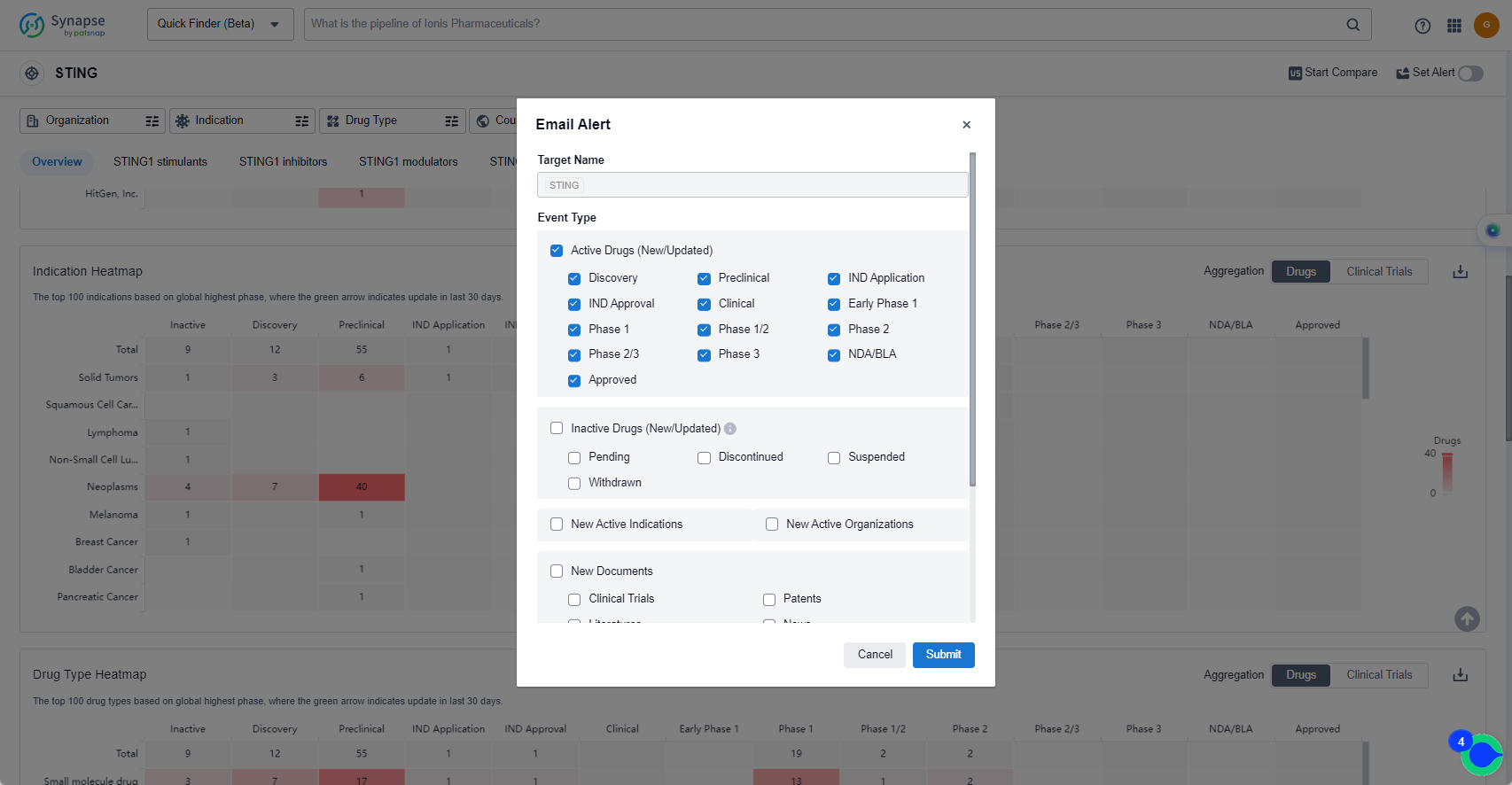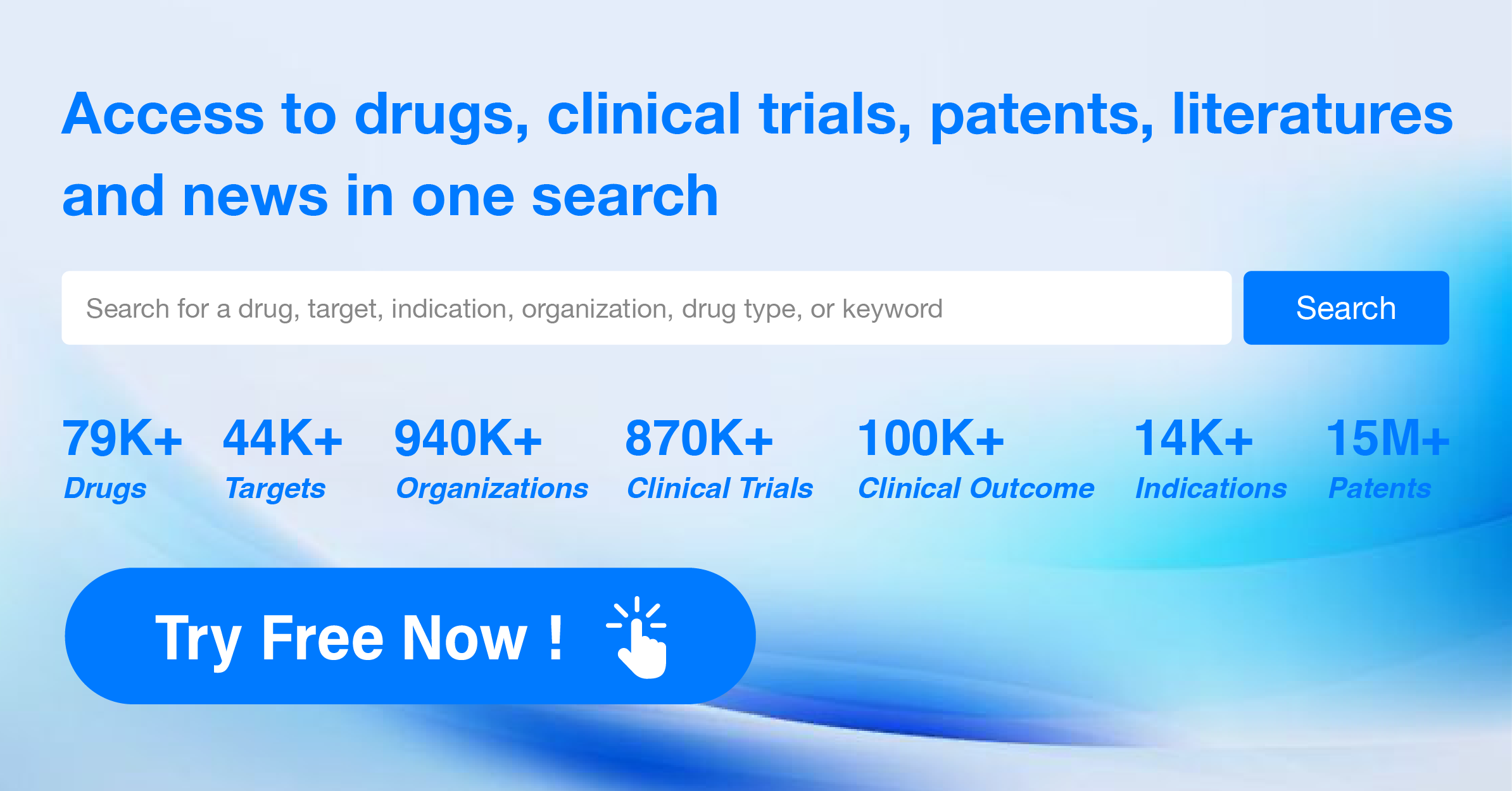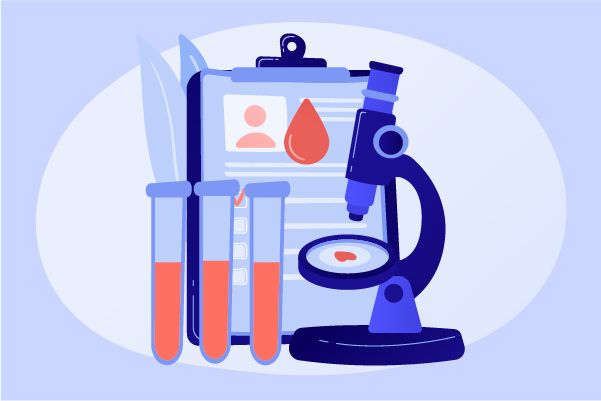What are STING agonists and how do you quickly get the latest development progress?
STING (Stimulator of Interferon Genes) is a protein that plays a crucial role in the innate immune response of the human body. It acts as a sensor for detecting the presence of foreign DNA, such as viral or bacterial DNA, within cells. When activated, STING triggers a signaling cascade that leads to the production of interferons and other immune response molecules. This activation helps to initiate an immune response against the invading pathogens, aiding in their clearance. Additionally, STING has been implicated in various diseases, including autoimmune disorders and cancer, making it an important target for therapeutic interventions in the pharmaceutical industry.
Recent studies suggest that STING agonists can attenuate tau phosphorylation after blast and repeated concussive injury. They could potentially be used for providing partial protection against radiation injury. Furthermore, there is ongoing research into repurposing STING agonists for other uses. For instance, the Clinicaltrials.gov database lists a study currently recruiting patients entitled “Safety and Efficacy of Piromelatine in Mild Alzheimer’s Disease Patients (ReCOGNITION),” indicating that the compound will be primarily developed for cognition and not for sleep. These developments suggest that STING agonists could play a significant role in the treatment of various diseases in the future.
Based on the analysis of the data provided, the current competitive landscape of target STING in the pharmaceutical industry is characterized by the growth of companies such as Merck & Co., Inc., ImmuneSensor Therapeutics, Inc., Sino Biopharmaceutical Ltd., and Codiak BioSciences, Inc. These companies have a strong focus on R&D and are progressing in various stages of development. The indications for drugs targeting STING include solid tumors, lymphoma, non-small cell lung cancer, and various other types of cancers. The most rapidly progressing drug types are small molecule drugs, followed by exosomes, unknown drugs, monoclonal antibodies, and antibody drug conjugates (ADCs). The United States, China, and other countries/locations are actively involved in the development of drugs targeting STING. The future development of target STING is expected to be driven by the continuous research and development efforts of these companies and the exploration of new indications and drug types.
How do they work?
STING agonists are a type of drug that activate the STING pathway in the immune system. STING stands for Stimulator of Interferon Genes and is a protein involved in the innate immune response. When STING is activated, it triggers the production of interferons and other immune signaling molecules, leading to an enhanced immune response against pathogens such as viruses and bacteria.
From a biomedical perspective, STING agonists are being investigated as potential immunotherapies for various diseases, including cancer. By activating the STING pathway, these agonists can stimulate the immune system to recognize and attack tumor cells. This approach is aimed at boosting the body's natural defense mechanisms to fight cancer.
STING agonists can be administered through different routes, including injection or topical application, depending on the specific drug formulation. They are being studied in preclinical and clinical trials to assess their safety and efficacy in treating different types of cancer and other immune-related disorders.
It's important to note that the development and use of STING agonists are still in the research stage, and further studies are needed to fully understand their potential benefits and any potential side effects.
List of STING Agonists
The currently marketed STING agonists include:
- IMSA-101
- MK-1454
- exoSTING
- SB-11285
- BI 1387446 (Boehringer-Ingelheim)
- BMS-986301
- CRD-3874
- DN-015089
- E-7766
- GSK-3745417
For more information, please click on the image below.
What are STING agonists used for?
STING agonists are being investigated as potential immunotherapies for various diseases, including cancer. For more information, please click on the image below to log in and search.
How to obtain the latest development progress of STING agonists?
In the Synapse database, you can keep abreast of the latest research and development advances of STING agonists anywhere and anytime, daily or weekly, through the "Set Alert" function. Click on the image below to embark on a brand new journey of drug discovery!
